The latest advancements in eGPU technology have sparked significant interest among professional buyers. With the global market for external GPUs projected to grow exponentially, understanding their selection criteria is crucial. This article delves into the key factors to consider when choosing an eGPU, offering valuable insights for wholesalers, retailers, and purchasing professionals aiming to meet the rising demand in 2025 and beyond.
Table of Contents:
– External GPUs: Revolutionizing the Computing Experience
– Key Factors When Selecting External GPUs for Computing Experience
– Enhancing Gaming and Professional Workflows with eGPUs
– Cost Considerations and Budgeting for eGPUs
– Conclusion
External GPUs: Revolutionizing the Computing Experience
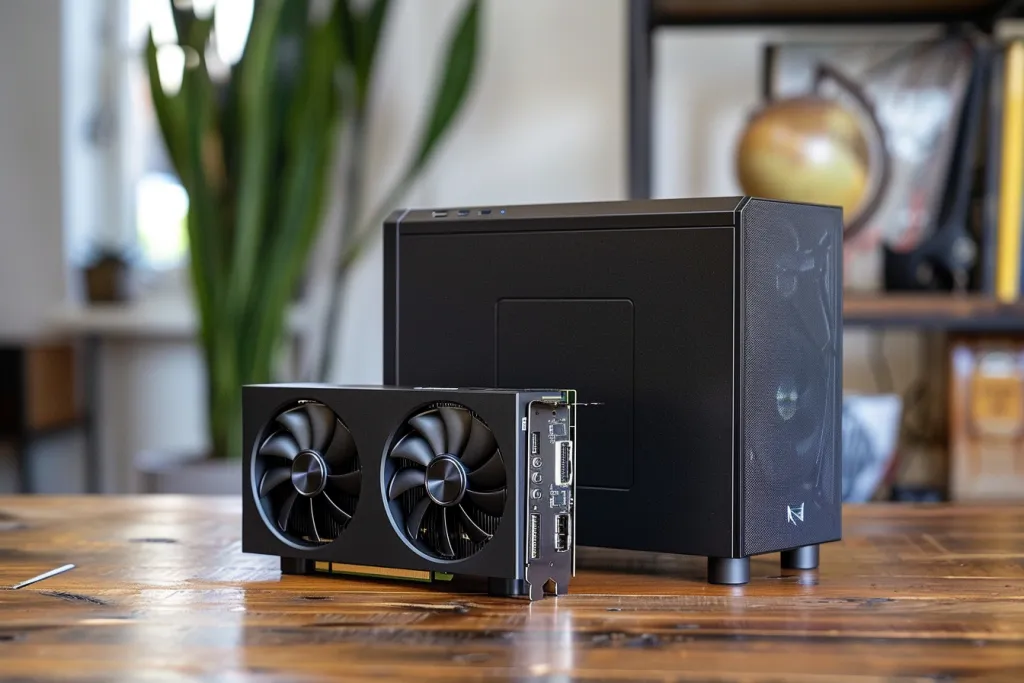
Market Overview of External GPUs
The global market for external GPUs (eGPUs) has seen exponential growth, driven by the rising demand for high-performance computing across various sectors. The market size, valued at USD 3.65 billion in 2024, is projected to reach USD 15.70 billion by 2029, reflecting a Compound Annual Growth Rate (CAGR) of 33.84%. This growth is due to the increasing adoption of eGPUs in gaming, professional graphics, and machine learning applications.
The gaming industry is a significant driver, with the global gaming hardware market expected to grow from USD 165.56 billion in 2024 to USD 277.08 billion by 2030. High-end gaming and the need for superior graphics performance have propelled the demand for eGPUs, which provide enhanced visual experiences and support high-resolution displays. Additionally, the professional sector, including video editing, 3D rendering, and scientific simulations, has embraced eGPUs for their ability to accelerate computational tasks.
Regionally, North America holds a substantial market share due to the high penetration of gaming consoles and PCs, technological innovations, and a strong presence of major eGPU manufacturers. The Asia-Pacific region is also witnessing rapid growth, driven by the burgeoning esports industry and increasing disposable income among consumers. Key players in the market include Nvidia, AMD, and Intel, who continue to innovate and expand their product offerings to meet the growing demand.
Detailed Introduction and Analysis of the eGPU Market
External GPUs have become a game-changer in the computing industry, offering users the flexibility to upgrade their graphics performance without replacing their entire system. These devices connect to laptops and desktops via Thunderbolt 3 or USB-C, providing a significant boost in graphical processing power. The integration of eGPUs with high-speed interfaces has enabled seamless performance enhancements, making them a popular choice among gamers, content creators, and professionals.
Recent innovations in eGPU technology include the development of more compact and efficient designs, improved cooling systems, and enhanced compatibility with various devices. For instance, Nvidia’s RTX series eGPUs offer real-time ray tracing and AI-powered enhancements, delivering exceptional visual fidelity and performance. Similarly, AMD’s Radeon Pro eGPUs cater to professionals requiring high computational power for tasks such as 3D modeling and video editing.
Consumers are increasingly adopting eGPUs due to their ability to extend the lifespan of existing hardware, providing cost-effective performance upgrades. The seasonal demand pattern is influenced by major product launches and gaming events, which drive sales spikes. Distribution channels have also evolved, with eGPUs being widely available through online retail platforms and specialized electronics stores. Economic influences on the market include the fluctuating prices of GPUs and the impact of global supply chain disruptions, which have occasionally led to shortages and increased prices.
The product lifecycle of eGPUs is relatively short, with rapid advancements in GPU technology driving frequent updates and new releases. Digitalization and the rise of remote work have further fueled the demand for eGPUs, as professionals seek powerful solutions to enhance their productivity. Social trends, such as the growing popularity of streaming and content creation, have also contributed to the increased adoption of eGPUs. Environmental regulations and sustainability concerns are prompting manufacturers to develop energy-efficient and eco-friendly eGPU solutions, addressing customer pain points related to power consumption and heat generation.
Brand positioning strategies in the eGPU market focus on differentiation through performance, design, and compatibility. Companies are targeting niche markets, such as mobile gamers and creative professionals, by offering tailored solutions that meet specific needs. For example, Razer’s Core X eGPU is designed for gamers seeking high portability and performance, while Sonnet’s eGFX Breakaway Box targets professionals requiring robust graphics acceleration for demanding applications.
Key Factors When Selecting External GPUs for Computing Experience
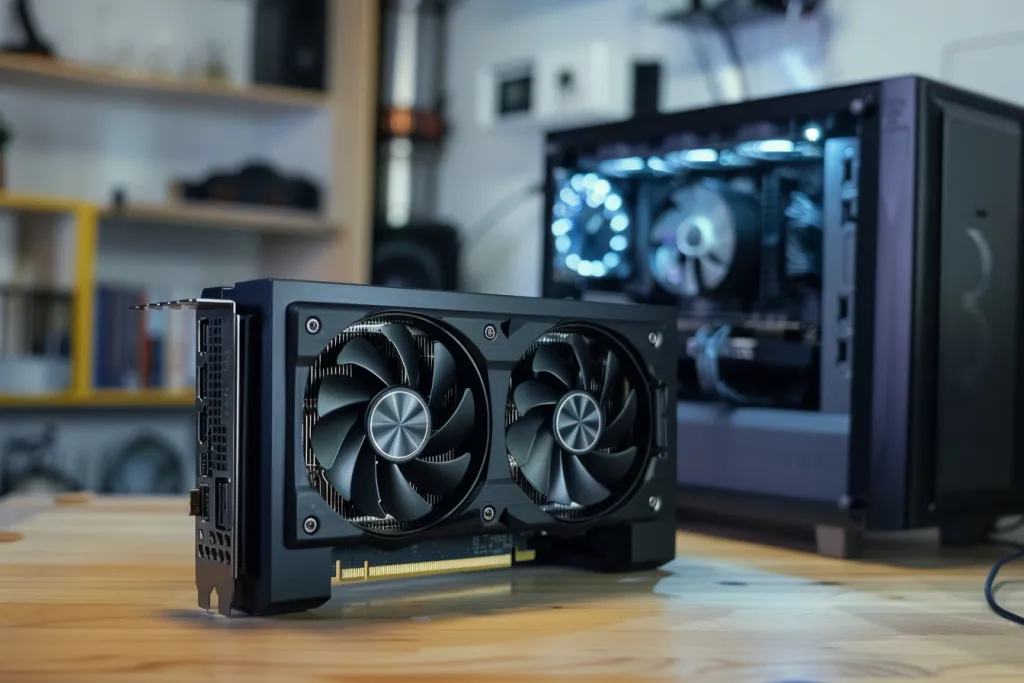
External GPUs (eGPUs) have revolutionized computing by offering desktop-level graphics performance to laptops and other portable devices. Choosing the right eGPU involves considering various factors that contribute to performance, compatibility, and user experience. Below are key factors to consider when selecting an eGPU for an enhanced computing experience.
Performance and GPU Compatibility
Performance is the primary reason for opting for an eGPU. The type of GPU in the eGPU enclosure significantly impacts overall performance. High-end GPUs like the NVIDIA RTX 4090 or AMD RX 7900 XT are preferred for demanding tasks such as gaming, video editing, and 3D rendering.
Compatibility between the eGPU and the host device is crucial. Not all laptops or desktops support eGPUs, and those that do may have varying levels of compatibility. Ensure the GPU is compatible with your system’s operating system and hardware. For instance, macOS has limited support for certain NVIDIA GPUs, so check compatibility lists from manufacturers.
Connectivity and Bandwidth
The connection interface between the eGPU and the host device is critical. Thunderbolt 3 and Thunderbolt 4 are the most common interfaces, offering high bandwidth necessary for optimal GPU performance. Thunderbolt 4, with its 40 Gbps bandwidth, ensures minimal bottlenecking, allowing the GPU to perform at its best.
Regular USB-C connections, while versatile, lack the bandwidth required for high-performance GPUs, leading to suboptimal performance. Always opt for Thunderbolt 3 or 4 connections to ensure the GPU can operate effectively without bandwidth restrictions.
Size and Portability
The physical size and portability of the eGPU enclosure are essential considerations, especially for users who need to transport their setup frequently. Enclosures vary from compact designs, like the Razer Core X, to larger models that can accommodate more substantial cooling systems and additional components.
Compact eGPUs are easier to carry and integrate into workspace setups but may offer limited cooling capabilities and upgrade options. Larger enclosures, while less portable, provide better cooling solutions and often support more powerful GPUs, enhancing longevity and performance under heavy loads.
Cooling and Noise Levels
Effective cooling is vital for maintaining GPU performance and longevity. eGPUs generate significant heat during intensive tasks, necessitating robust cooling solutions. Enclosures with active cooling systems, including multiple fans and efficient airflow designs, help dissipate heat effectively.
Noise levels are also a consideration, particularly in quiet work environments. Enclosures with high-quality fans and noise-dampening materials can minimize noise while maintaining optimal temperatures. Liquid cooling solutions, though less common in eGPUs, offer superior cooling with minimal noise, suitable for high-performance setups.
Upgrade Potential and Future-Proofing
The ability to upgrade the GPU within the eGPU enclosure ensures the setup can keep pace with advancing technology. Enclosures that support easy access and replacement of GPUs offer better long-term value.
Future-proofing involves selecting an eGPU with support for the latest connection standards and compatibility with current and upcoming GPU models. Ensuring the enclosure can accommodate larger, more power-hungry GPUs will save costs and effort in future upgrades.
Enhancing Gaming and Professional Workflows with eGPUs
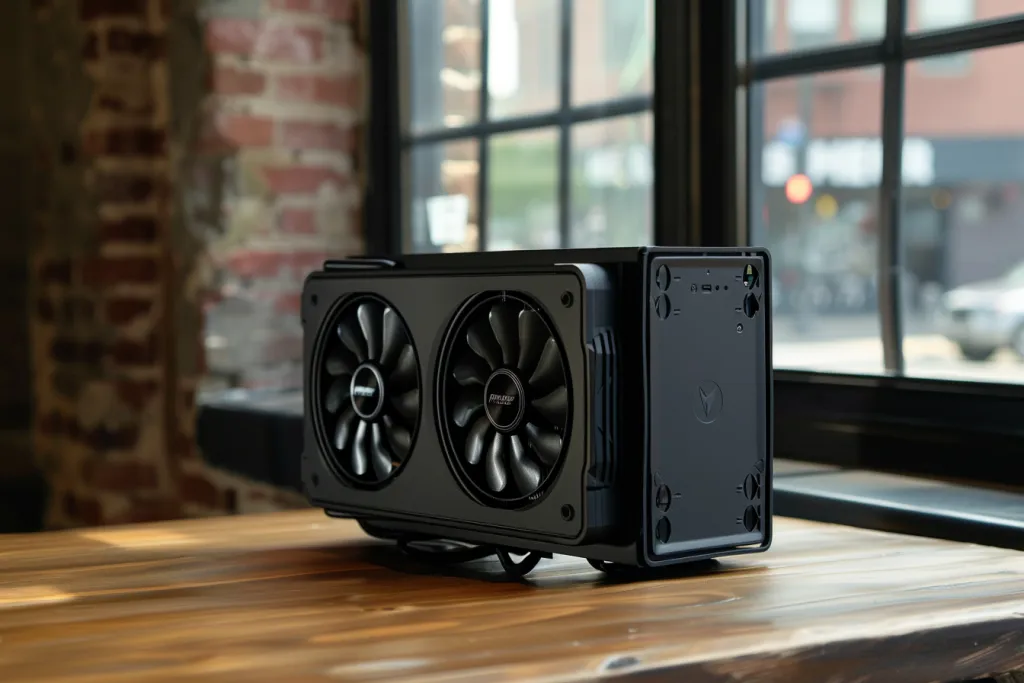
External GPUs significantly enhance both gaming experiences and professional workflows by providing additional graphical processing power. This section explores how eGPUs benefit different use cases and the technological advancements driving their adoption.
Gaming Performance Boost
eGPUs transform laptops into gaming powerhouses, allowing them to run the latest AAA titles at high settings. Gamers benefit from higher frame rates, improved graphics quality, and smoother gameplay. Pairing a high-end eGPU with a mid-range laptop can rival desktop gaming rigs, providing flexibility and mobility without sacrificing performance.
Professional Applications
For professionals in fields like video editing, 3D rendering, and data science, eGPUs offer a substantial performance boost. Software applications that leverage GPU acceleration, such as Adobe Premiere Pro and Blender, see significant improvements in rendering times and overall efficiency. This enhancement allows professionals to handle more complex projects and meet tight deadlines with ease.
Technological Advancements
Recent advancements in GPU technology and connectivity standards have made eGPUs more viable. The introduction of Thunderbolt 4 ensures higher bandwidth and better compatibility, while new GPU architectures from NVIDIA and AMD offer unprecedented performance levels. These advancements make eGPUs a compelling option for users seeking to extend the capabilities of their portable devices.
Cost Considerations and Budgeting for eGPUs
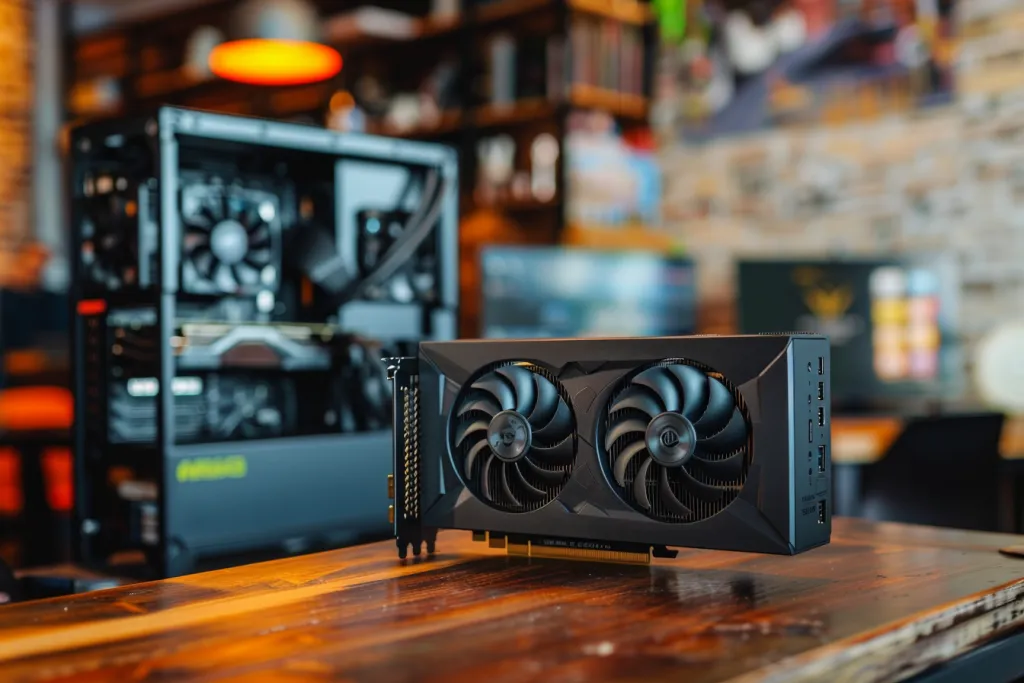
While eGPUs offer numerous benefits, they come with associated costs. Understanding the financial aspects and budgeting for an eGPU setup is crucial for making an informed purchase.
Initial Investment
The initial investment in an eGPU setup includes the cost of the GPU, the enclosure, and any additional accessories such as cables and cooling solutions. High-end GPUs and enclosures can be expensive, with top-tier models costing several hundred to over a thousand dollars.
Long-term Value
Considering the long-term value of an eGPU setup involves assessing its upgrade potential and durability. Enclosures that support future GPU models and have robust build quality offer better long-term value. Investing in a high-quality enclosure may have a higher upfront cost but can save money in the long run by avoiding frequent replacements.
Budget-Friendly Options
For those on a tighter budget, mid-range GPUs and enclosures provide a balance between performance and cost. These setups may not offer the same level of performance as high-end models but still significantly enhance computing capabilities. Researching and comparing different models can help find the best value for money within a given budget.
Conclusion
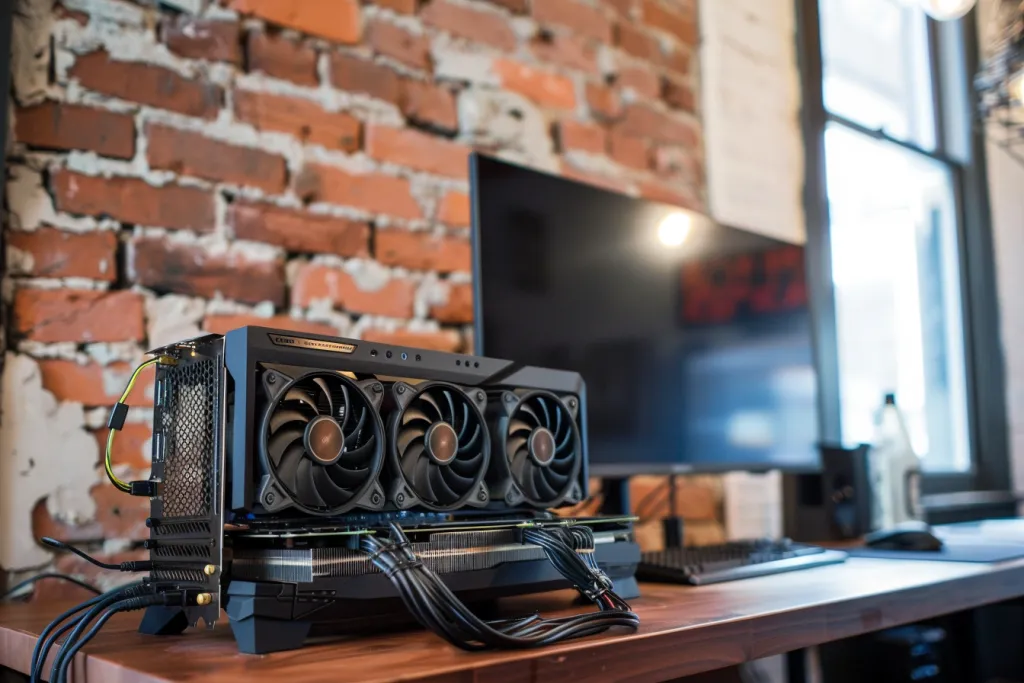
Selecting the right external GPU for your computing needs involves carefully considering factors such as performance, compatibility, connectivity, size, cooling, and cost. By understanding these aspects, users can make informed decisions that enhance their computing experience, whether for gaming, professional work, or general use.



